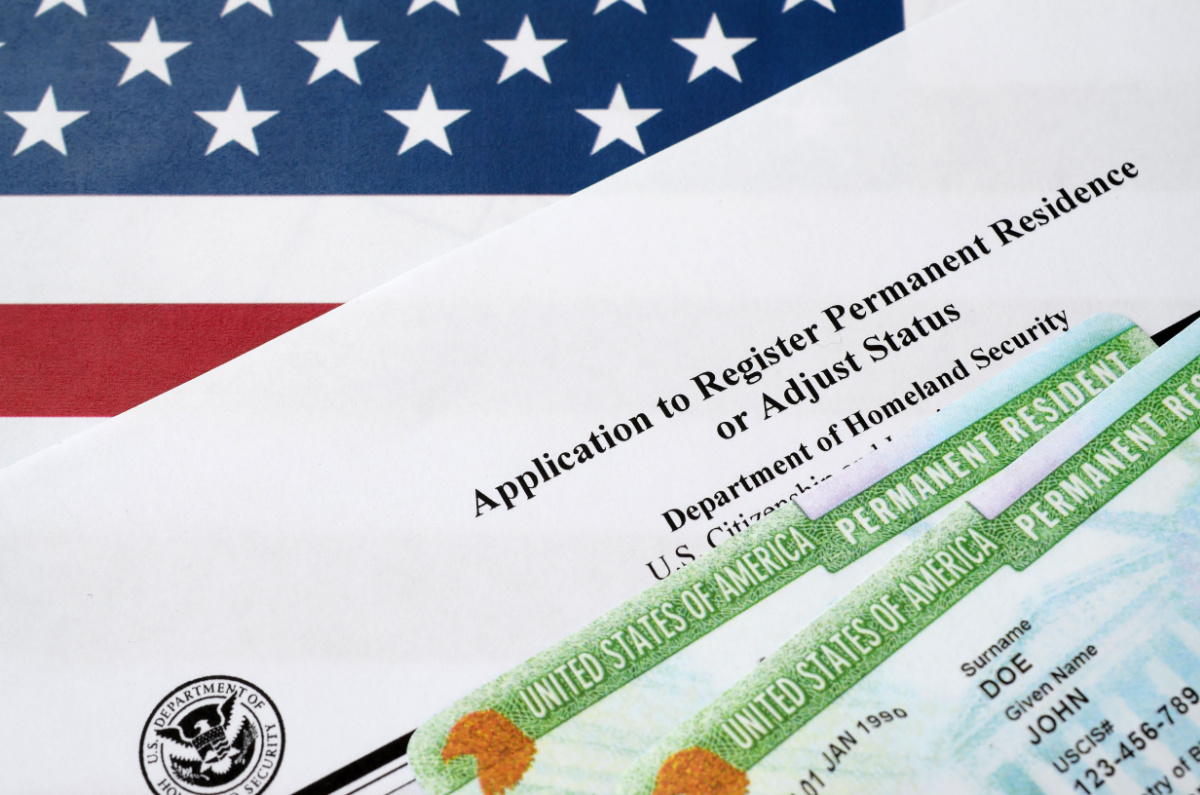
08 Mar What Does an “Adjustment of Status” Mean?
The term “adjustment of status” is frequently used in the context of immigration law, but what does it mean precisely? Adjustment of status is a legal process that allows eligible applicants to apply for lawful permanent resident status (also known as getting a green card) while in the United States under a nonimmigrant visa. It means you’re able to complete your immigration process without having to return to your home country for visa processing. The United States Citizenship and Immigration Services (USCIS) oversees this process.
Who Can Apply for Adjustment of Status?
Not everyone is eligible for adjustment of status. The eligibility criteria are quite stringent, and applicants must meet specific conditions. These conditions include being physically present in the United States, having entered the country legally, and not being subject to any grounds of inadmissibility. Certain exceptions may apply depending on the category under which one is applying.
Typically, individuals eligible for adjustment of status fall into categories such as immediate relatives of U.S. citizens, family-sponsored immigrants, employment-based immigrants, refugees or asylees, and certain special immigrants. Each category has its own set of eligibility criteria and requirements that must be met.
The Adjustment of Status Process
Most often, the process begins with the filing of a petition, usually by a family member or employer. Once USCIS approves this petition and a visa is available, the applicant can file Form I-485, Application to Register Permanent Residence or Adjust Status.
Upon receiving the application, USCIS will send a notice stating that you must schedule a biometrics appointment where your fingerprints and photographs will be taken. Subsequently, an interview may be required. The final decision on the adjustment of status application comes after the interview, and if approved, the applicant becomes a lawful permanent resident of the United States.
How Long Does It Take to Approve an Adjustment of Status?
The length of time it takes to have an adjustment of status application approved is not fixed and can vary significantly depending on several factors. On average, it may take anywhere from 8 to 14 months for completion. In some cases, it may extend up to two or three years. However, once approved, the processing time after payment typically takes up to 90 days.
The Importance of Seeking Professional Assistance
Navigating the adjustment of status process can be complex and overwhelming, especially given the stringent eligibility criteria and documentation requirements. Seeking professional assistance from an experienced immigration attorney can greatly simplify the process, increase the likelihood of a successful outcome, and assist with appeals and motions to reopen if necessary.
Certain situations might involve special considerations, such as waivers of inadmissibility, national interest exemptions, or protections under the Violence Against Women Act. Employment authorization documents and travel permits may also be part of the process while waiting for approval. Understanding priority dates and any public charge rules can also help applicants stay compliant and avoid delays.
Consulting an immigration attorney ensures that applications and supporting evidence are submitted correctly and that any potential complications — such as asylum claims, appeals, or removal proceedings — are handled promptly. By carefully preparing their applications and following the proper procedures, applicants increase their chances of successfully adjusting their status, obtaining lawful permanent residency, and eventually achieving citizenship.
Experienced attorneys like those at Henry & Grogan can provide invaluable guidance and support at every stage of the adjustment of status process, from determining eligibility and compiling required documentation to preparing for interviews and addressing any challenges or obstacles that may arise.
Contact Henry & Grogan for Expert Guidance
Should you need assistance understanding what an adjustment of status means, or if you require help navigating the process, don’t hesitate to reach out to us at Henry & Grogan. We’re more than ready to provide the support and guidance you need, whether it’s related to adjustment of status, a marriage visa, or anything else related to immigration law in Philadelphia. Contact us today for a consultation.
Adjustment of Status FAQs
Who is eligible to adjust their status in the U.S.?
Eligibility for AOS depends on several factors, but the core requirements typically include the following:
- You must be physically present in the United States.
- You must have been inspected and admitted or paroled into the U.S. (though some exceptions exist).
- An immigrant visa must be immediately available to you at the time you file.
- You must not be “inadmissible” to the U.S. due to reasons such as criminal history, certain health conditions, or previous immigration violations.
What’s the difference between Adjustment of Status and Consular Processing?
Adjustment of Status is for individuals already in the United States, allowing them to complete the entire green card process without leaving the country. Consular processing, on the other hand, is for individuals outside the U.S. or for those inside the U.S. who are ineligible for AOS. Their final interview and visa approval happen at a U.S. embassy or consulate in their home country.
Can I work in the U.S. while my AOS application is pending?
Yes, in many cases, you can. When you file Form I-485, you can also simultaneously file Form I-765 for an Employment Authorization Document (EAD), also known as a work permit. Once USCIS approves the I-765 and you receive your EAD card, you are authorized to work for any employer in the United States while your green card application is pending.
Can I travel internationally while my AOS is pending?
Traveling abroad while your AOS application is pending can be risky and may result in your application being considered abandoned. To travel safely, you generally must first obtain advance parole by filing Form I-131.
Important: Even with advance parole, re-entry is not guaranteed. It’s crucial to consult with an attorney before making any international travel plans. Contact Henry & Grogan to discuss the potential risks and benefits.



